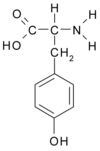Many of the symptoms of preeclampsia, a major cause of maternal death and premature birth worldwide, stem from a single protein, researchers have found. The discovery could lead to new ways of detecting and treating the disease.
Preeclampsia strikes 1 in 20 pregnancies, usually in the final trimester. Symptoms include high blood pressure and proteinuria--excessive protein in the urine. Preeclampsia can escalate to eclampsia, characterized by life-threatening seizures and kidney damage in the mother.
Earlier research had implicated the placenta, the vascular organ uniting mother and fetus. Without more specifics about what underlies the disease, however, early delivery of the baby and placenta is often required to dispel the symptoms. This treatment leads to premature births and sometimes the baby's death.
In search of the condition's molecular bases, nephrologist S. Ananth Karumanchi of Harvard Medical School in Boston and his colleagues compared gene activity in the placentas of healthy and preeclamptic women. Of the hundreds of differences the team uncovered, one stood out. The gene encoding a protein called soluble fms-like tyrosine kinase 1 (sFlt1) was overactive in the preeclamptic placentas.
Scientists already knew that sFlt1 thwarts blood vessel growth. Moreover, previous research had shown that in some cancer patients, a drug with activity similar to sFlt1's induced preeclampsia-like symptoms.
Early in pregnancy, the placenta produces proteins that keep it growing along with the fetus. Later, Karumanchi suspects, the placenta makes sFlt1 to halt that growth. "In preeclampsia, that balance is shifted.... The body makes more [sFlt1] too soon," Karumanchi hypothesizes. "Some of that excess spills into the mother's blood, destroying endothelial cells in her body and leading to at least some of the condition's symptoms.
Karumanchi and his colleagues uncovered plenty of evidence incriminating sFlt1. For example, they found that blood concentrations of the protein in pregnant woman with preeclampsia were higher than in healthy pregnant women. The abnormal sFlt1 concentrations dropped after delivery.
The researchers also found that blood serum from preeclamptic women stifled development of human blood vessel cells growing in lab dishes, while serum from healthy women stimulated cell growth. Treatment with blood vessel promoters reversed the vessel-stunting effects of preeclamptic women's blood. One more thing: When injected into rats, sFlt1 elicited preeclampsia symptoms. The researchers report their results in the March Journal of Clinical Investigation.
That an inhibitor of blood vessel growth could play a role in preeclampsia "makes a lot of sense in retrospect, says vascular scientist Peter Carmeliet of the Katholieke Universiteit in Leuven, Belgium.
"It's difficult to attack a disease unless there is a known cause, adds Marshall D. Lindheimer, a nephrologist at the University of Chicago and a medical advisor to the Preeclampsia Foundation.
Now that sFlt1's role in preeclampsia has come to light, scientists can work toward a treatment that counteracts the protein's nefarious effects, says Lindheimer. If sFlt1 concentrations rise before the onset of other symptoms, he adds, the factor may also prove useful for early disease detection and prevention.
Karumanchi points to another benefit of the discovery. "There have been no animal models that reproduce all the disease symptoms," he says. Now, rats injected with sFlt1 can serve that purpose, and researchers can test potential preeclampsia therapies on them.
COPYRIGHT 2003 Science Service, Inc.
COPYRIGHT 2003 Gale Group



